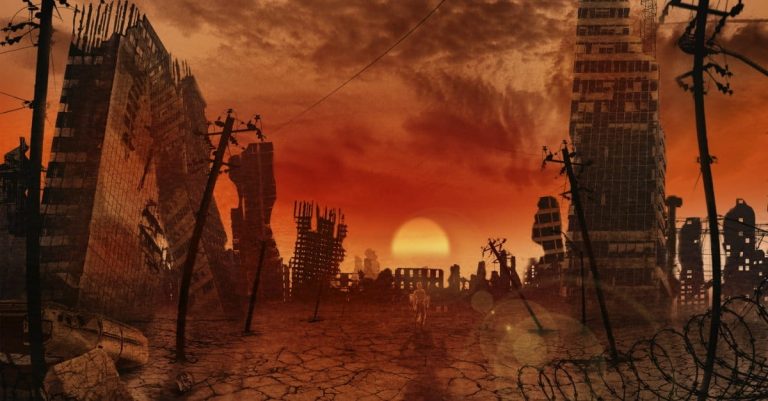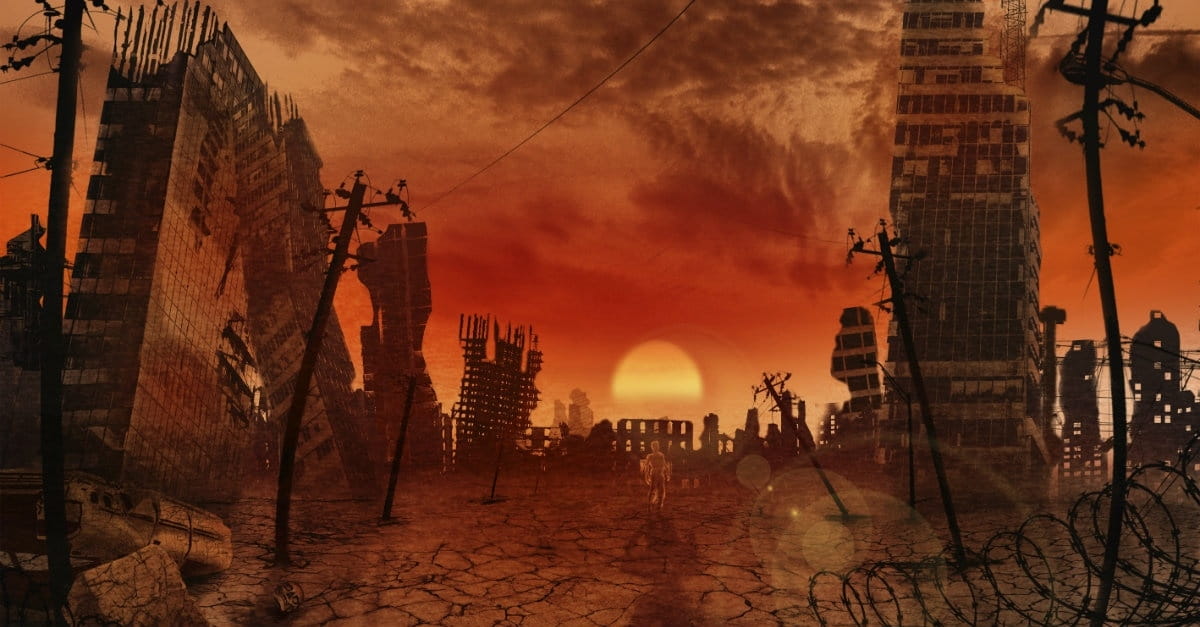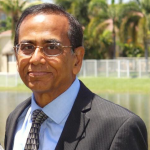

Today, New Delhi has resembled the New Armageddon, where Ambulance sirens blare through the night – a constant reminder of the unbelievable tragedy unfolding in the city.
As people die from want of oxygen, citizens have come together to support one another. They make thousands of calls to find oxygen, lug heavy cylinders around from one refilling point to the other, deliver cylinders to people’s homes, and, when needed, bring people to hospitals and bodies to crematoriums.
Will Modi pay the price for complacence?
By Nazarul Islam
Historically, paying the price for their government’s mistakes is something Indians have come to know fairly well. When their prime minister locked down the country with only four hour notice in March 2020, thousands of homeless and daily wage laborers went hungry. In the absence of immediate government assistance, ordinary citizens had to band together and help each other.
Today, as people die from want of oxygen, citizens have come together to support one another. They make thousands of calls to find oxygen, lug heavy cylinders around from one refilling point to the other, deliver cylinders to people’s homes, and, when needed, bring people to hospitals and bodies to crematoriums.
Today, New Delhi has resembled the New Armageddon, where Ambulance sirens blare through the night – a constant reminder of the unbelievable tragedy unfolding in the city. India is currently experiencing a devastating, record-breaking second wave of COVID-19, with the capital especially hard hit. Every night ushers in a now sadly familiar ordeal. Desperately sick patients go from hospital to hospital, begging for oxygen.
The hospitals, with only hours of oxygen to spare for their own patients, turn the afflicted away. Relatives and friends post urgent pleas on social media, trying in vain to source the third most abundant element in the universe. But not for love of God or money is there any oxygen to be had in the city.
By morning, a long line of corpses trails outside the Nigambodh crematorium. Relatives of the deceased, many of them infected with COVID-19 themselves, wait for four hours or more in the scorching summer heat for an overworked priest to become available to perform the last rites. In one crematorium, the heat of the ovens burning uninterrupted for so long has melted iron grills.
In another, workers are burning bodies on the pavement. Friends in other cities and states—Lucknow, Mumbai, Gujarat—share similar horror stories. That grim detail is the human face of a statistical catastrophe.
India is now breaking records for new cases of COVID-19 every day. Nearly 0.4 million cases were recorded on April 26. According to the World Health Organization, one of every three new COVID-19 cases in the world is currently in India. But even that staggering figure is likely an undercount, as the real total of new COVID-19 infections in India is thought to be much higher.
Likewise, the current count of around 2,000 deaths per day is in all probability a gross underestimation. Experts predict that India will reach a peak of one million cases per day (and thousands of deaths) by mid-May. This is the nightmare scenario envisioned by public health officials around the world at the beginning of the pandemic: the disease rampant and devastation at an unimaginable scale.
This was NOT supposed to have been this way. The government of the ruling Bharatiya Janata Party (BJP) invited this carnage through its obfuscations, missteps, and complacency. In February, the party passed an internal resolution congratulating “its leadership for introducing India to the world as a proud and victorious nation in the fight against Covid.” But Prime Minister Narendra Modi and his government ignored numerous red flags in the first three months of the year and disregarded scientific opinion.
Many factors have contributed to this gargantuan second wave, but at the heart of the disaster is the government’s refusal to see it coming.
Last year in autumn, India was recording some of the lowest case totals in the world, despite the immense size of its population. Many Indians were convinced that the pandemic was on its way out, that the country’s relative youth protected it from the scale of death apparent, for example, in European countries with older populations, and even that people in India possessed natural immunities that helped stave off the virus. Hospitalization and death rates had fallen, and the government promised that an indigenous vaccine was just around the corner.
True, Indians watched in horror as patients flooded hospitals in the United States over the winter, unable to imagine that their own hospitals would soon witness far worse scenes. The news from Brazil angered and frustrated Indians—why wasn’t President Jair Bolsonaro taking COVID-19 seriously? At least Modi was still wearing a mask and saying all the right things about fending off the disease. Even Modi’s habitual critics acknowledged that the country had fared reasonably well under his watch—India had been spared the worst.
However, unknown to many Indians, a new strain of the virus had emerged in the country in October 2020. The government watched the B.1617 variant take root but didn’t allocate the funds required to support COVID-19 testing with the necessary genome sequencing to track it. Officials made little attempt to understand this new foe.
Not surprisingly, numbers of new cases and deaths remained low as autumn gave way to winter. Unperturbed, many Indians donned their finery and began gathering in large numbers for the famed wedding season in northern India. The government halfheartedly put caps on the number of guests permitted at weddings but did not warn people of the dangers of this new strain.
Unfortunately, the government doubled down on triumphalism, buoyed by the development and manufacture of COVID-19 vaccines in India. It inaugurated the largest vaccination drive in the world in January. At the end of that month, Modi addressed the virtual World Economic Forum, looking gleeful as he told the attendees that their predictions about India were wrong; the country had dealt with COVID-19 swiftly and was now poised to help end the pandemic around the world by exporting millions of vaccine doses.
Again, the prime minister did urge vigilance and insisted that it would be necessary to prepare for a second wave. But that rhetoric did not match his actions. In 2020, Modi had set up a fund to battle the pandemic called PM Cares, which received donations from around the world. Officials insisted that the fund would be used to set up 162 plants that would manufacture oxygen cylinders. It took the government over six months to start inviting bids for the construction of these plants; as of this month, the government has built only 33.
Giant India also exported twice as much oxygen between April 2020 and March 2021 than in the previous year; it did not generate sufficient stockpiles for domestic consumption in anticipation of a second wave.
Unbelievable, as it may seem—Modi’s bravado at the forum had damaging consequences. Certain government-friendly media networks and newspapers amplified the notion that India had vanquished COVID-19. To the horror of scientists and medical professionals, Indians began shedding their masks and ignoring social-distancing guidelines. As a result, new COVID-19 cases ticked up; India recorded over 11,000 cases on February 1, and the curve has risen upward ever since.
An arrogant Hindu nationalist government did not heed the warnings of the scientific community; it consistently dismissed actual scientific opinion in favor of quackery. On February 19, Harsh Vardhan, the health minister, appeared alongside a mask-less spiritual leader named Baba Ramdev to launch Coronil, a supposed cure for COVID-19 produced by Ramdev’s company. Case numbers continued to rise as the government dithered. The journalist Vidya Krishnan revealed in a recent investigative report in The Caravan magazine that the country’s national scientific task force on COVID-19, which is supposed to advise the central government on its response to the pandemic, did not meet even once between February and mid-April.
Shockingly, the government exacerbated the spread of the disease by allowing large religious festivals and pilgrimages to proceed.
Again on March 11, this year when new daily cases had reached nearly 50,000, Modi welcomed, via tweet, pilgrims to the banks of the Ganges River in the state of Uttarakhand for the Kumbh Mela. The Kumbh Mela is an important festival that, on certain days, draws millions of pilgrims who crowd in close quarters on the banks of the sacred river.
Predictably, COVID-19 ripped through the gathering. A top seer died of the disease, thousands of pilgrims tested positive, and the authorities in the BJP-run state insisted they could do little to arrest the spread.
However, this approach contrasted starkly with the government’s reaction to a Muslim convention in March 2020, at the outset of the pandemic. That meeting was a super-spreader event (at a scale smaller than that of the ongoing Kumbh Mela) and spurred fierce government action; authorities arrested attendees and held some in detention for over a year.
Certain sections of the media and the BJP’s own representatives cast COVID-19 as a Muslim disease. A year later, as daily cases crossed the 200,000 mark in mid-April, Modi could muster only the weakest of pleas, urging the organizers of the Kumbh Mela to make the event a “symbolic” one.
Critics in general believe that Political imperatives also brought on the second wave. By early March, the government’s attention had shifted to elections in five key states. Modi himself zipped from state to state addressing massive rallies, often without a mask. In mid-April, when India was recording over 200,000 new cases a day, the prime minister boasted about the size of his rallies in West Bengal.
His deputies and allies appeared on national television to dismiss any connection between the second wave and these large public rallies.
The BJP was the last party to suspend campaigning in West Bengal, calling things off only when it became impossible to ignore the fact that thousands of Indians were dying daily for want of oxygen.
India’s current public health crisis is compounded by an epistemological one: the government’s data cannot be trusted. Experts claim that India is underrepresenting the scale of its tragedy, something that is abundantly clear to those of us on the ground.
The Financial Times reported in late April that local news reports in seven districts across the states of Bihar, Gujarat, Madhya Pradesh, and Uttar Pradesh showed that at least 1,833 people were known to have died of COVID-19 over a period of several days, but only 228 COVID-19 deaths were officially reported in that time; in Gujarat’s Jamnagar district, for instance, 100 people died of COVID-19, but only one death was reported.
Epidemiologists have projected an actual mortality rate that is ten times as high as the one reported and are forecasting that India will reach the grim milestone of a million COVID-19 deaths by the end of August. The real toll of the pandemic may never be clear, making it all the harder to hold the government to account.
Indian government’s incompetence and inaction in tracking the B.1617 variant has meant that scientists are only now starting to study it and determine its transmissibility, lethality, and response to available vaccines. Virologists and epidemiologists have believed that it has fueled this second wave of COVID-19. More troubling still, the variant is now ABLE to circumvent immunities to the disease. Many people currently hospitalized in Delhi with COVID-19 had received either one or two shots of the AstraZeneca vaccine, a worrying fact that does not bode well for containing the evolving disease.
Beyond doubt, Vaccination has remains the best way to stave off escalating hospitalization and death rates in a crowded country where social distancing and lockdowns are difficult to enforce—and deeply unpopular politically. The virus is now spreading rapidly through urban and rural areas. The city of Kolkata, for instance, reported a 50 percent test positivity rate last week.
The Modi government has committed to making COVID-19 vaccines available to all Indians above the age of 18 after May 1. A sensible government policy would be to mandate free universal vaccination, but Indians can access vaccines for free only in particular places. Many Indians will end up having to pay for one of the two vaccines available in the country—the indigenously developed Covaxin and Covishield, the Indian-produced version of the AstraZeneca vaccine—under a confusing pricing regime. That system exacerbates the already enormous inequalities in the country.
Certainly, the Rich Indians will get vaccinated, but India’s poorest may find themselves waiting for a long time.
Paying the lofty price for their government’s acts errors and omissions, both negligent and criminal—is something Indians have come to know fairly well.
Like last year, now too, as people die from want of oxygen, citizens have come together to support one another. They make thousands of calls to find oxygen, lug heavy cylinders around from one refilling point to the other, deliver cylinders to people’s homes, and, when needed, bring people to hospitals and bodies to crematoriums.
They cook meals for those recovering at home. They stand in interminable queues at pharmacies to try to find perpetually out-of-stock medicines. Many of these activists say they no longer know the difference between day and night, and their phones never stop ringing.
The light at the end of this long, dark tunnel is the grace of India’s people.
______________________
About the Author
 The Bengal-born writer Nazarul Islam is a senior educationist based in USA. He writes for Sindh Courier and the newspapers of Bangladesh, India and America. He is author of a recently published book ‘Chasing Hope’ – a compilation of his 119 articles.
The Bengal-born writer Nazarul Islam is a senior educationist based in USA. He writes for Sindh Courier and the newspapers of Bangladesh, India and America. He is author of a recently published book ‘Chasing Hope’ – a compilation of his 119 articles.